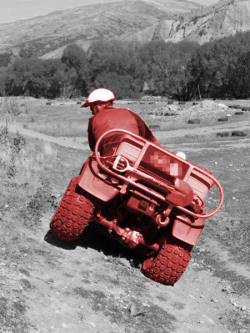WA farm probe opens
 After 14 deaths in 18 months, an inquiry into safety on WA farms is holding public hearings.
After 14 deaths in 18 months, an inquiry into safety on WA farms is holding public hearings.
WorkSafe independent inquirer Pam Scott is chairing the inquiry that was announced in June, after 12 people had died in 12 months on WA farms.
Two more deaths have occurred since the probe was first announced.
WorkSafe commissioner Darren Kavanagh says there is evidence that farmers are willing to buy into the process.
“They want the incidents to stop,” he said.
“They don't like to see their colleagues, friends and family being injured or harmed.
“That's really positive ground to work on and I'm optimistic we'll have a good report to try and turn the industry around.”
With some major harvesting seasons coming up soon, Mr Kavanagh says deaths must be prevented.
“I don't want to suggest or imply in any way that it is a problem across the entire industry,” he said.
“But you can't ignore the sheer number of people who are dying in the industry.
“It troubles me that we continue to see incidents.”
The inquiry has been examining previous incidents and the exact circumstances relating to on-farm fatalities and serious injuries.
Safe Farms WA executive officer Maree Gooch says older men operating machinery and younger men on quad bikes and ATVs need a specific focus.
“The numbers don't lie - they tell a story, as tragic as it is,” she says.
“We, as an industry, need to have a say if we want to be taken seriously.”
Ms Gooch says stats show that only 29 per cent of grain farmers, 39 per cent of wool/sheep producers and 44 per cent of cattle producers have safety policies and procedures documented.
Twenty-three per cent of respondents in a recent survey said their policies were “in their head” and 27 per cent relied on “employee common sense”.
“It seems there are certain commodity areas that think common sense is common, but it's actually not,” Ms Gooch said.
“We have to step back and go; ‘Am I putting my multimillion-dollar business and assets at risk by not taking five minutes by doing a safe work method statement or risk plan?’”







 Print
Print